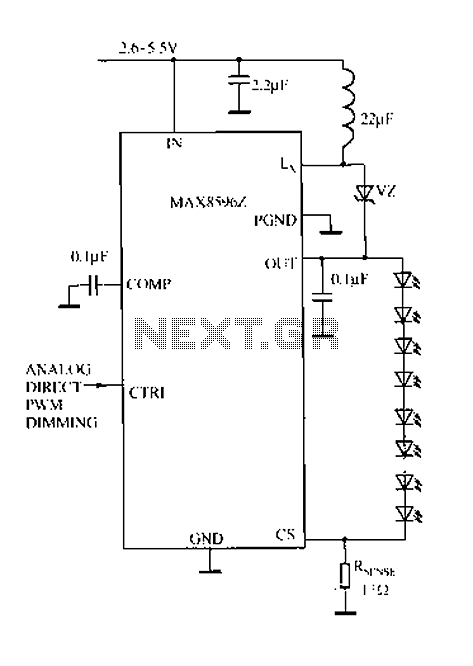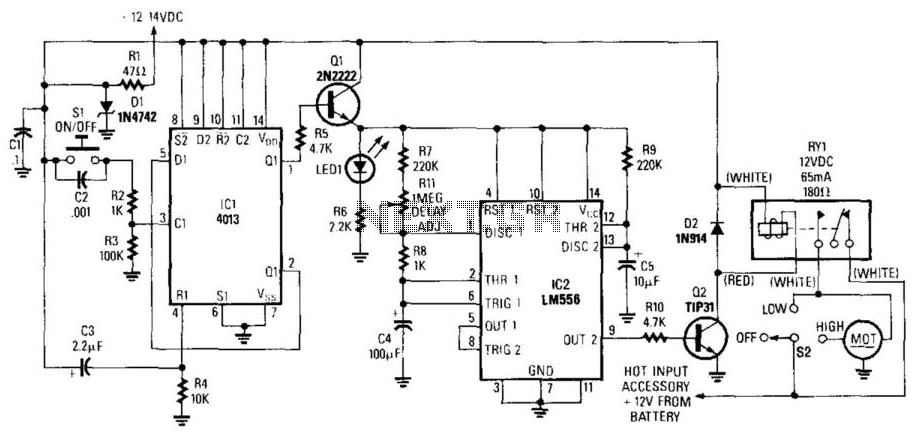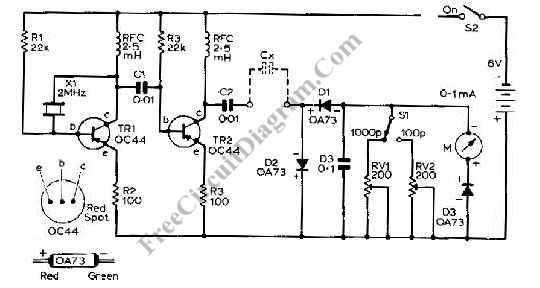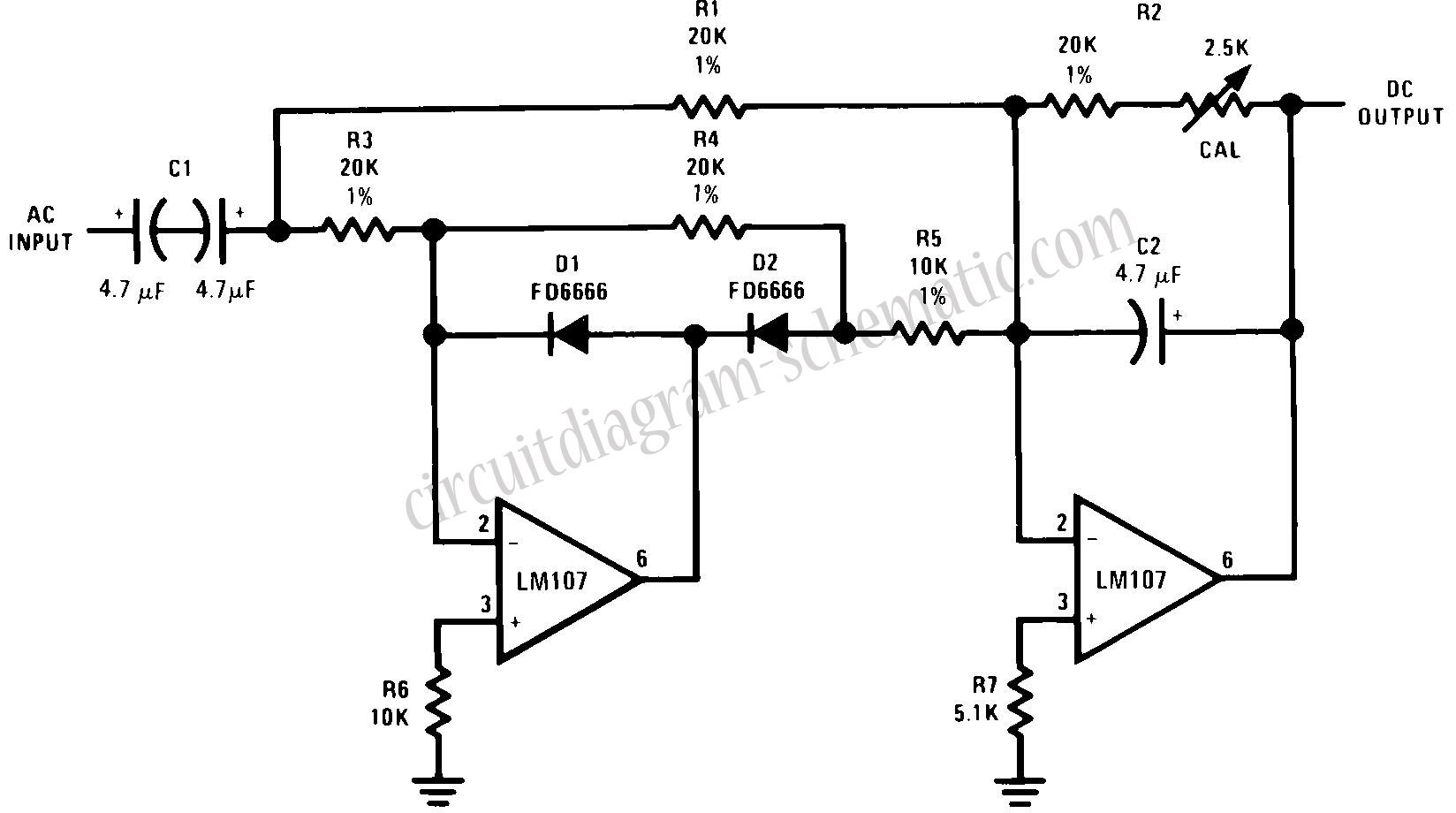
Digital delay circuit lamp circuit 2
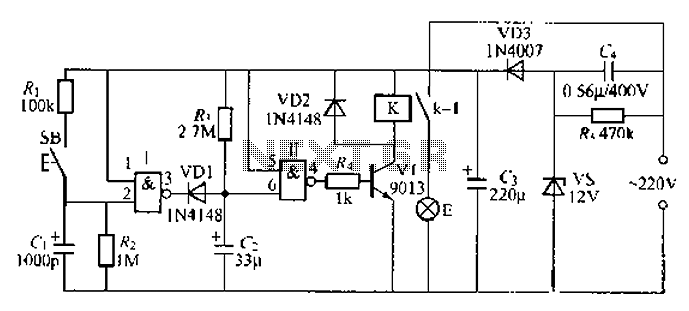
A 2-input NAND gate integrated circuit is used in the fabrication of a digital delay lamp circuit. This circuit is energized by a simple capacitive voltage rectifier, which operates by crossing the half line. The output terminal indicates the stability of the entire DC voltage power supply controller. The input terminals are typically at a high state (logic level 1), while the output terminal of one gate remains in a low state due to the steady state of the circuit. When the circuit is activated, the input transitions from a low to a high state, causing the output to switch to a low state, which allows current to flow through a diode. This results in another input terminal becoming low, causing the output terminal to go high, energizing a relay that powers the lamp. When the button is released, the output returns to a high state, turning off the diode and allowing the circuit to charge over time, eventually causing the relay to release and the lamp to turn off. The circuit utilizes digital integrated circuits with two NAND gates, which should have their input sides grounded to minimize interference. It is recommended to use CBB polypropylene capacitors rated for 100V and a small electromagnetic relay rated for DC12V.
The digital delay lamp circuit is designed to provide a controlled delay in the operation of a lamp using a 2-input NAND gate integrated circuit. The circuit begins with a capacitive voltage rectifier that ensures a stable DC voltage supply. The two NAND gates are configured such that the output responds to changes in the input states, specifically focusing on the transition from low to high.
Upon energization, the initial state of the NAND gates is crucial. Both inputs are typically held at a high logic level (1), which keeps the output of one gate in a low state (0). This is due to the steady state conditions of the circuit, where the charging of capacitors influences the logic levels. When an external switch (SB) is pressed, the first input transitions from low to high, triggering a change in the output state. The output of the first gate switches to low, allowing current to flow through diode VD1, which then influences the second input of the second NAND gate.
As the second input also goes low, the output of the second NAND gate transitions to high, energizing the relay (K) that powers the lamp (E). This relay operation is critical as it provides a physical connection to the lamp, allowing it to illuminate. The design includes a timing element, where after the button is released, the output remains high for a period determined by the RC time constant of the charging circuit. The time constant is influenced by the values of the resistors and capacitors used in the circuit.
After approximately 40 seconds, the charge on the capacitor reaches a level that causes the output to lose its low state, deactivating the relay and turning off the lamp. The circuit design emphasizes the importance of grounding the input sides of the NAND gates to prevent interference, ensuring reliable operation. The use of high-quality components, such as CBB polypropylene capacitors rated at 100V, and the selection of a suitable electromagnetic relay rated for DC12V, are essential for the longevity and performance of the circuit. Overall, this digital delay lamp circuit effectively demonstrates the application of logic gates in practical electronic designs, providing both functionality and a delay mechanism for controlling lighting.A 2-input NAND gate integrated circuit fabrication of digital delay lamp circuit, VD3, vs, after Composed of simple capacitive voltage rectifier buck crossing the half line, th e circuit is energized, C. A terminal is output ipv about the stability of the entire controller DC voltage power supply. Figure, the door I the door O feet and the feet of are usually island level 1, so that both open state, while the other gate II input That is due to the end of foot in steady state C: it has charged the wires, so it is high level 1 so the door. II output terminal pin low level state, the diode VT end, the relay K little trick. E lamp does not light when pressed SB, by R. power to (j g of electricity, so that the door I input feet from the original low-to-high level 1 state, the output goes low O state, diode VDI conduction, such as on the adoption of VDI discharge.
therefore, another rjU the one input terminal feet becomes a low level. state, the output terminal pin goes high l state, high hills l level NIE Yi Rt make wr conduction, the relay K is energized, its power make contact k1 is closed, the lamp is powered hair E dagger when released SB, f1 T and the output goes high l, VD1 off, f. but also by R. charging about after 40s time (depends on R, and (1, wide electrical time constant), f. F level rose to a certain value, the door lose meaning. low., VT end, K release, lamp E goes out. door 1, f] [I can CD1011 digital integrated circuits inside two intact and two NAND gates brother does not use NAND gates should the grounding of all its input side, to eliminate possible interference caused .c.
requires the use of CBB, lOOV polypropylene capacitors and other type K with JZC-22F, DC12V power in a small electromagnetic relay.
The digital delay lamp circuit is designed to provide a controlled delay in the operation of a lamp using a 2-input NAND gate integrated circuit. The circuit begins with a capacitive voltage rectifier that ensures a stable DC voltage supply. The two NAND gates are configured such that the output responds to changes in the input states, specifically focusing on the transition from low to high.
Upon energization, the initial state of the NAND gates is crucial. Both inputs are typically held at a high logic level (1), which keeps the output of one gate in a low state (0). This is due to the steady state conditions of the circuit, where the charging of capacitors influences the logic levels. When an external switch (SB) is pressed, the first input transitions from low to high, triggering a change in the output state. The output of the first gate switches to low, allowing current to flow through diode VD1, which then influences the second input of the second NAND gate.
As the second input also goes low, the output of the second NAND gate transitions to high, energizing the relay (K) that powers the lamp (E). This relay operation is critical as it provides a physical connection to the lamp, allowing it to illuminate. The design includes a timing element, where after the button is released, the output remains high for a period determined by the RC time constant of the charging circuit. The time constant is influenced by the values of the resistors and capacitors used in the circuit.
After approximately 40 seconds, the charge on the capacitor reaches a level that causes the output to lose its low state, deactivating the relay and turning off the lamp. The circuit design emphasizes the importance of grounding the input sides of the NAND gates to prevent interference, ensuring reliable operation. The use of high-quality components, such as CBB polypropylene capacitors rated at 100V, and the selection of a suitable electromagnetic relay rated for DC12V, are essential for the longevity and performance of the circuit. Overall, this digital delay lamp circuit effectively demonstrates the application of logic gates in practical electronic designs, providing both functionality and a delay mechanism for controlling lighting.A 2-input NAND gate integrated circuit fabrication of digital delay lamp circuit, VD3, vs, after Composed of simple capacitive voltage rectifier buck crossing the half line, th e circuit is energized, C. A terminal is output ipv about the stability of the entire controller DC voltage power supply. Figure, the door I the door O feet and the feet of are usually island level 1, so that both open state, while the other gate II input That is due to the end of foot in steady state C: it has charged the wires, so it is high level 1 so the door. II output terminal pin low level state, the diode VT end, the relay K little trick. E lamp does not light when pressed SB, by R. power to (j g of electricity, so that the door I input feet from the original low-to-high level 1 state, the output goes low O state, diode VDI conduction, such as on the adoption of VDI discharge.
therefore, another rjU the one input terminal feet becomes a low level. state, the output terminal pin goes high l state, high hills l level NIE Yi Rt make wr conduction, the relay K is energized, its power make contact k1 is closed, the lamp is powered hair E dagger when released SB, f1 T and the output goes high l, VD1 off, f. but also by R. charging about after 40s time (depends on R, and (1, wide electrical time constant), f. F level rose to a certain value, the door lose meaning. low., VT end, K release, lamp E goes out. door 1, f] [I can CD1011 digital integrated circuits inside two intact and two NAND gates brother does not use NAND gates should the grounding of all its input side, to eliminate possible interference caused .c.
requires the use of CBB, lOOV polypropylene capacitors and other type K with JZC-22F, DC12V power in a small electromagnetic relay.

